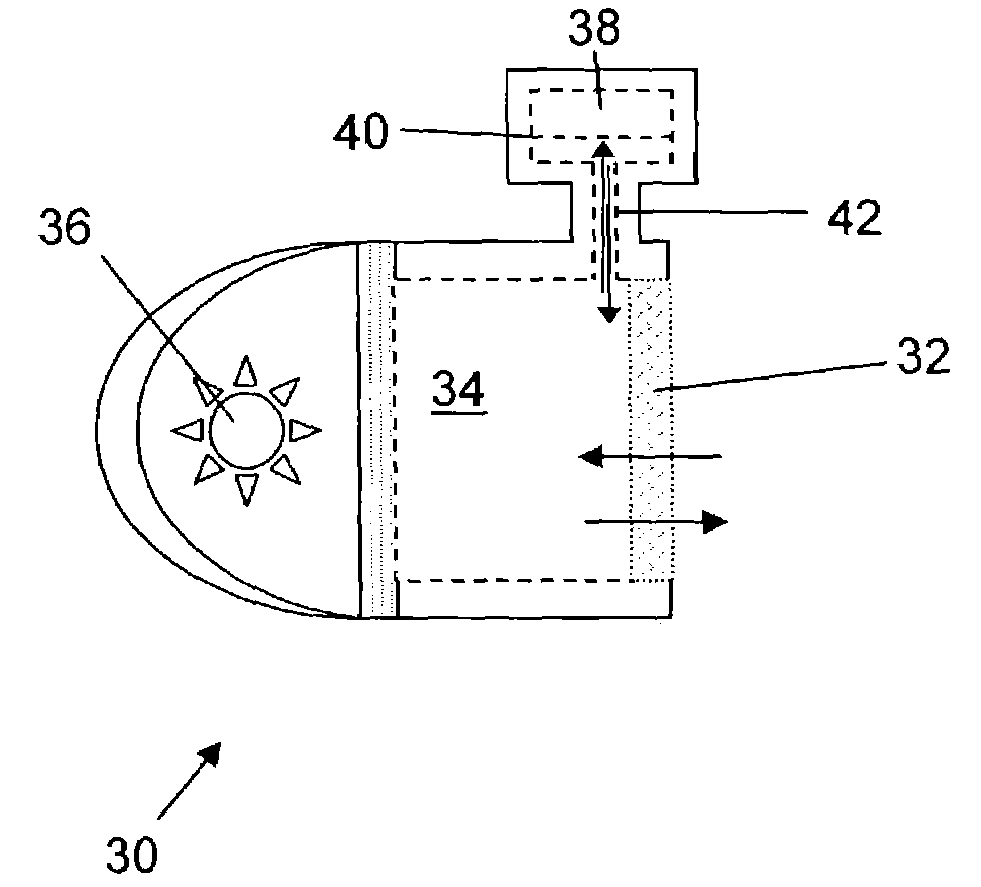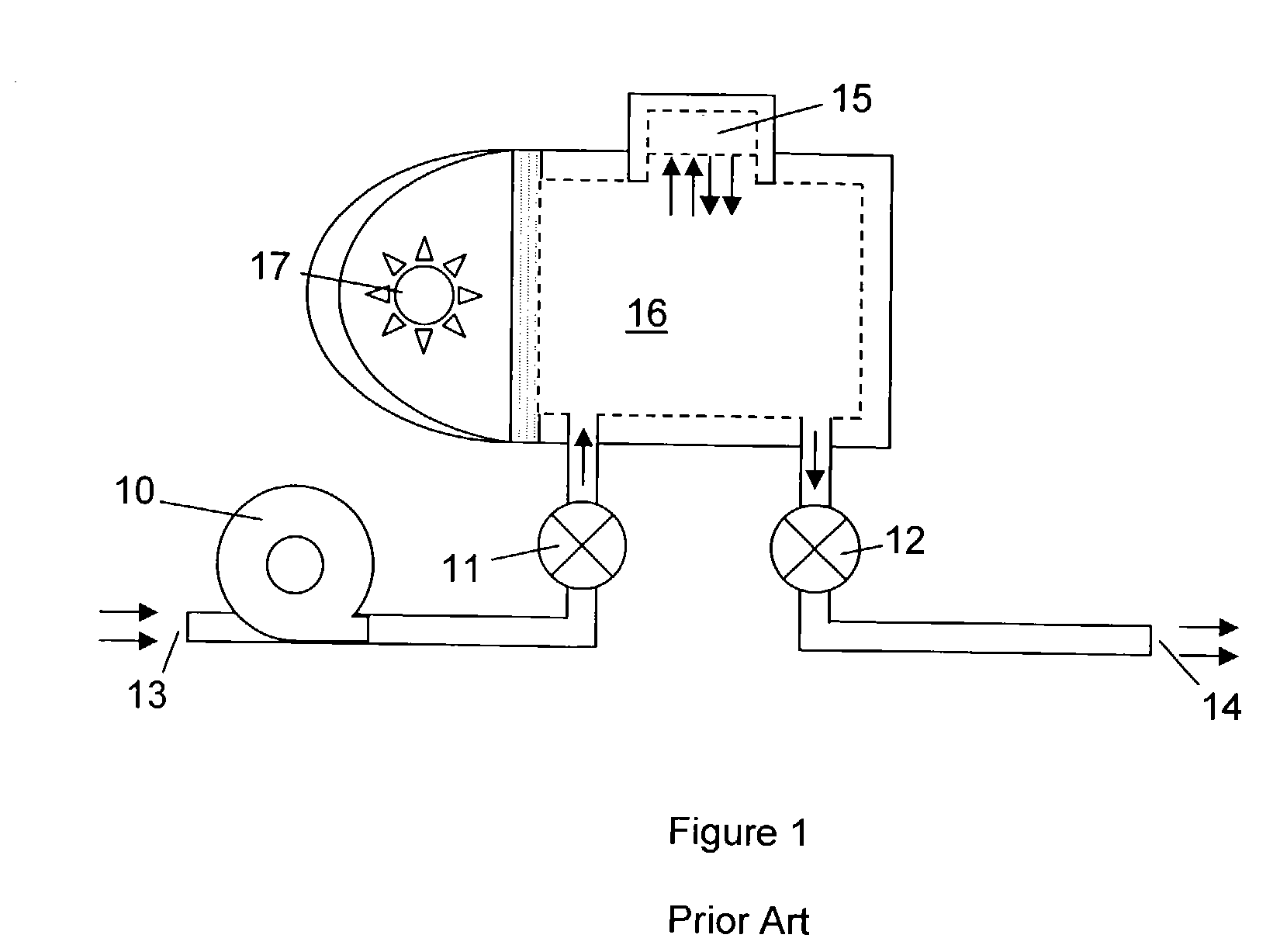Photoacoustic gas sensor utilizing diffusion
a technology of photoacoustic gas and sensor, applied in the field of photoacoustic gas sensors utilizing diffusion, can solve the problems of generating photoacoustic signals, affecting the output signal of such photoacoustic detectors, and microphones b>15/b> can absorb parts, etc., and achieve the effect of improving the response time of the sensor and faster initial rise time to t50
- Summary
- Abstract
- Description
- Claims
- Application Information
AI Technical Summary
Benefits of technology
Problems solved by technology
Method used
Image
Examples
Embodiment Construction
[0018]A preferred embodiment of a diffusive photoacoustic gas detector 30 of the present invention is illustrated in FIG. 4. Reference is made to U.S. Pat. No. 4,740,086, the disclosure of which is incorporated by reference as if fully set forth herein, for the principles of operation and construction of a photoacoustic sensor / detector. In the embodiment of FIG. 4, an acoustically attenuating element 32 that is continuously permeable to an analyte gas makes up a portion of the wall of the sensing volume 34. As is known in the art, the acoustically attenuating element 32 acts to reduce external sources of sound / pressure waves from entering the sensing volume 34 and acts to ensure that the resulting photoacoustic pressure signal is not weakened by the escape of such signal from the sensing volume 34 while offering only minimal resistance to the diffusion of the analyte gas into the sensing volume 34. Preferably, the optical energy from the light source 36 enters through another portio...
PUM
| Property | Measurement | Unit |
|---|---|---|
| length | aaaaa | aaaaa |
| diameter | aaaaa | aaaaa |
| diameter | aaaaa | aaaaa |
Abstract
Description
Claims
Application Information
 Login to View More
Login to View More - R&D
- Intellectual Property
- Life Sciences
- Materials
- Tech Scout
- Unparalleled Data Quality
- Higher Quality Content
- 60% Fewer Hallucinations
Browse by: Latest US Patents, China's latest patents, Technical Efficacy Thesaurus, Application Domain, Technology Topic, Popular Technical Reports.
© 2025 PatSnap. All rights reserved.Legal|Privacy policy|Modern Slavery Act Transparency Statement|Sitemap|About US| Contact US: help@patsnap.com



